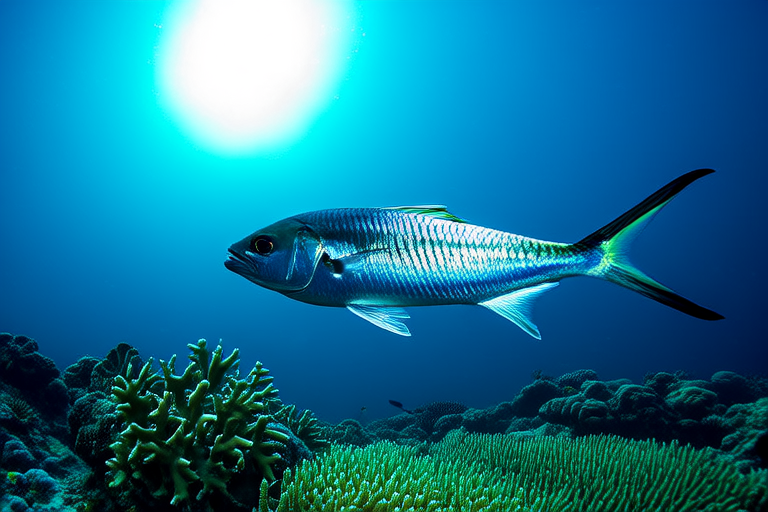How Parrot Fish Are Saving Coral Reefs
In the vibrant underwater world of coral reefs, parrot fish play a crucial role in maintaining the health and balance of these delicate ecosystems. These colorful, herbivorous fish are known for their unique grazing habits that help control algae growth, promote coral regeneration, and enhance biodiversity. This article explores the ecological significance of parrot fish, their grazing behaviors, and the impact of their conservation efforts on coral reef ecosystems.
The Role of Parrot Fish in Coral Reef Health
Coral reefs are some of the most biodiverse ecosystems on the planet, supporting thousands of species of fish, invertebrates, and plants. However, they face numerous threats, including climate change, pollution, and overfishing. One of the primary challenges to coral reef health is the overgrowth of algae, which can smother and kill corals. Enter the parrot fish – these fish are nature’s gardeners, constantly grazing on algae and other plant material that could otherwise choke out coral polyps.
Parrot fish have specialized teeth arranged in a beak-like structure that allows them to scrape algae from the surface of coral reefs. This process, known as bioerosion, not only helps keep algae in check but also plays a vital role in breaking down dead coral skeletons into fine sand, contributing to the formation of beaches and islands. By controlling algae growth and aiding in the breakdown of old coral structures, parrot fish help maintain the structural integrity of reefs, ensuring they remain healthy and vibrant.
Grazing Habits and Their Impact
The grazing habits of parrot fish are essential for maintaining the delicate balance within coral reef ecosystems. When left unchecked, algae can quickly dominate a reef, shading out corals and preventing new ones from growing. Parrot fish consume vast amounts of algae daily, effectively preventing this overgrowth. In addition to their direct consumption of algae, their feeding activities also stimulate coral growth by removing competing organisms and increasing light penetration.
A study published in the journal Marine Ecology Progress Series demonstrated that areas with higher densities of parrot fish had lower levels of macroalgae and higher rates of coral recruitment. The researchers found that when parrot fish were removed from experimental plots, algal cover increased significantly within just a few months. This underscores the critical role these fish play in maintaining reef health.
Enhancing Coral Regeneration and Biodiversity
In addition to controlling algae, parrot fish contribute to coral regeneration by breaking down dead coral skeletons through their feeding activities. As they graze, they inadvertently grind up calcium carbonate-rich coral rubble into fine sand particles. This process, known as bioerosion, releases nutrients back into the water column, promoting the growth of new corals and enhancing overall reef productivity.
Moreover, the presence of parrot fish encourages greater biodiversity within coral reef communities. By maintaining healthy coral structures, these fish create ideal habitats for countless species of fish, invertebrates, and other organisms. Research has shown that reefs with abundant parrot fish populations tend to host more diverse and abundant fish communities compared to those where parrot fish numbers are depleted.
Real-World Examples of Parrot Fish Conservation
The importance of protecting parrot fish has been highlighted by several real-world examples where conservation efforts have led to significant improvements in reef health. One notable case is the Flower Garden Banks National Marine Sanctuary in the Gulf of Mexico. Here, strict fishing regulations implemented in 1996 have helped restore parrot fish populations, leading to reduced algae cover and increased coral cover.
Similarly, in the Caribbean, initiatives such as the establishment of marine protected areas (MPAs) have proven effective in safeguarding parrot fish populations. A study conducted by the University of California, Santa Barbara, revealed that MPAs with strong enforcement saw a 40% increase in parrot fish biomass compared to unprotected sites. These areas also exhibited healthier coral communities and greater resilience to environmental stressors like bleaching events.
The Future of Coral Reefs Depends on Parrot Fish
The ongoing degradation of coral reefs worldwide underscores the urgent need for effective conservation strategies. Protecting parrot fish is one of the most promising approaches to ensuring the long-term survival of these vital ecosystems. By maintaining healthy parrot fish populations, we can help prevent algae overgrowth, promote coral regeneration, and enhance biodiversity.
However, current fishing practices continue to threaten many species of parrot fish. Overfishing not only reduces their numbers but also alters the composition of reef communities, potentially leading to further declines in coral health. To address this issue, it is essential to implement sustainable fishing policies that take into account the ecological roles of parrot fish.
In conclusion, parrot fish are indispensable allies in the fight against coral reef degradation. Their grazing habits and bioerosion activities play a pivotal role in maintaining the health and diversity of these ecosystems. By conserving parrot fish populations, we can help ensure the survival of coral reefs for future generations. It is imperative that we recognize the value of these remarkable creatures and take action to protect them before it is too late.
